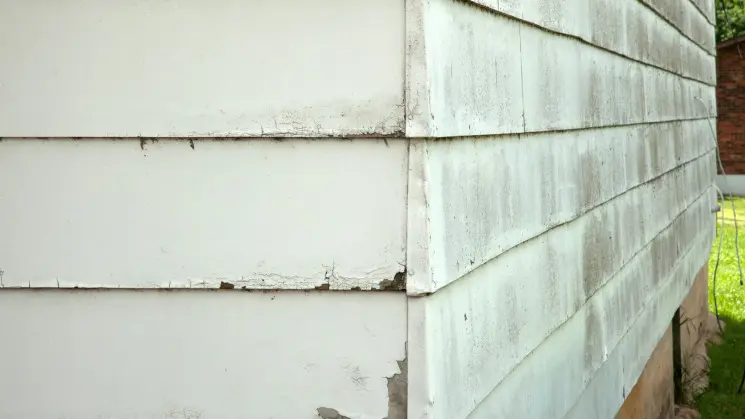Table of Contents

Siding is meant to protect your home from the elements, especially moisture in the form of rain, snow, and ice. That’s because moisture poses a serious threat to your home’s overall structure, putting your foundation, wooden support structures within your walls, and more at risk.
However, just because it is supposed to safeguard your home, that’s no guarantee it’ll always do the job right. Water can get in if you’re not careful. Here’s why this problem happens, and how to spot it if water has damaged your siding.
How Water Sneaks Behind Your Siding
There are several culprits that help moisture get underneath your home’s exterior, where it can do damage to internal structures.
Age and Wear
The most common reason that water gets behind your home’s protective layer is simply siding failure. Like everything else around your house, this material gets old and starts to wear down over time and through constant exposure to rain, sun, and other weather elements. Storm damage can also weaken it, as do pest infestations such as termites. All these things can make your siding loose, cracked, and susceptible to water getting in.
Clogged Gutters
When your gutters are filled with dirt, leaves, twigs, and other debris, water cannot flow easily off your roof and safely away from your house. Instead, water tends to pour over the edges of clogged gutters and down your exterior. From this top-down direction, moisture can get underneath your siding boards.
Roof Damage
If your roof is leaky — either due to failure related to its age or damage that hasn’t been fixed — this puts your home at risk. Just like clogged gutters let moisture seep down and behind siding boards, your leaky roof can allow this also.
Brittle or Missing Caulk
Caulking is a small yet critical protective element that seals the gaps around doors and windows. Without caulk, moisture can easily get behind your home’s exterior and into areas such as your window and door frames.
Poor Installation
Siding needs to be installed carefully, with the right tools and techniques, or it won’t be secure and watertight. A host of installation failures can occur — from nailing new boards over old ones (a big no-no) to not placing them in the right places. These mistakes let moisture sneak in.
How to Spot Water Damage on Siding
Once moisture has begun to get behind your siding, you’ll see some telltale signs you have an issue to address. Here’s what to look for.
Leaks and Water Stains
The first and most obvious sign of moisture damage is visible evidence of leaking. You may see water stains on exterior walls and/or the ceiling near those walls, or you may see streaks or stains on your siding that don’t go away.
Peeling Paint
If your exterior paint is wearing down sooner than it should, too much moisture is often the cause. You’ll notice your paint is fading prematurely, blistering, or peeling.
Rotted Wood
When water sneaks behind siding, wood rot is sure to follow. You’ll notice that the wooden boards are starting to look pitted and discolored. The problem may also be evident in exterior door frames and window trim, which feel soft to the touch instead of firm.
Mold and Mildew
Brown and black patches will show up on your siding when you have a mold or mildew problem. Excess moisture allows these annoying growths to form. They both have a foul odor too. And you may notice moldy smells and spots inside your home, on walls near the exterior.
Sunken or Protruding Nails
When siding is installed, the nails are flush with the boards, and they shouldn’t draw attention to themselves with how they look. So, if you notice your siding’s nails are sunken in, pushed out, or rusting, that’s a sign moisture is penetrating behind the boards.
Loose or Warped Boards
Moisture infiltration can cause your siding panels to pull away from your home. The boards may shift out of place, fall off, or become warped. Your exterior will look unsightly in spots as a result. Plus, the movement can make siding crack, worsening the moisture exposure.
High Energy Costs
When siding begins to fail due to excess moisture exposure, it means your home isn’t as protected against the elements as it should be. Outdoor temperatures can start to have more impact on your home’s interior, making your heating and air-conditioning unit run more often.
Ensure Your Home Stays Protected with Top-Performing New Siding
Siding is essential to safeguarding your investment in your property, and it also gives you the attractive curb appeal you desire. So if you’re seeing clear signs of moisture damage or your exterior is old and outdated, a fresh makeover may be just what you need to fall in love with your Rochester Hills and Ann Arbor area home all over again. Whether you own a classic Troy Colonial or any other style of home, our team at John McCarter Construction will help you find the perfect siding look and style to fit your architecture. Learn more about our siding services.
